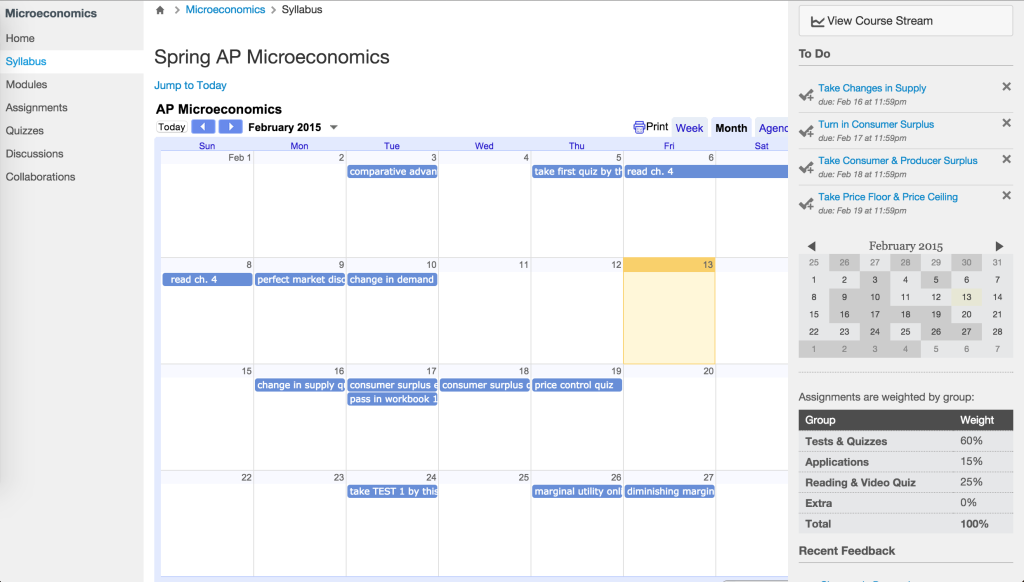Emily Beinkampen ’17: Over 70% of college students take an online course throughout the four years of pursuing their bachelor degree. To adapt to these generational changes in education, EA introduced its first online course, AP Microeconomics, this year. When students first began the course, Adam Lavalle, member of the Math Department, told them, “You are going to take two things away from my course; one is the economics you learn about and the other is the experience of taking an online class.”

Photo Courtesty of Michael Hinckley ’15
Lavalle explained the dynamic of the class, saying, “It’s considered hybrid because its partially online, and partially in person. We meet twice every 12 day cycle, but each day students have assignments that vary from readings, to online quizzes, or even being a part of an online discussion where they reply with either typed information or video responses.”
“The curriculum works well for an online course because you can explore the general ideas when we meet in person, but also get into depth and explore the subtleties when we do online work,” stated Michael Hinckley ‘15. “We have a textbook and a workbook that we use in addition to the online parts, but most of the work is done online and through Canvas. It’s very interesting because you teach yourself a lot of the information instead of being told everything in a classroom.”

Photo Courtesty of College Board
Because it is the first online course at Episcopal, Lavallee revealed that every day he continues to “figure out what works, and what doesn’t work.” He emphasized, “It isn’t just the teachers figuring out what works best for the course, but the students as well. It’s good practice for the future because students need to be independent, and with this online course they learn to discipline themselves.”
Lavallee also believes that students benefit from online courses because they can add more flexibility to their schedules, allowing them to do their work whenever it is best for them. “There are students taking this course who wouldn’t have been able to take microeconomics because it didn’t fit their schedules. In a regular class you have forty minutes of class time and then about a half hour of homework, but with this you can choose when that forty minutes of class time takes place: during school, during one or your free blocks, at home, or before practice. You’re learning about how you learn the best, how to manage your time, and how to be disciplined about doing your work.”
Even if students are struggling with the new environment and having difficulty completing their work, Lavallee ensured that he is available to the students taking the online course to work through the schedule and help them with time management. “A huge percent of students take an online course in college,” Lavallee remarked. “This is a great opportunity and a good way to figure out strategies on how to learn online and how to manage your time.”